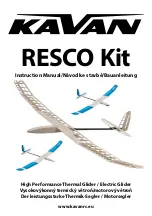
Propeller Owner’s Manual
147
ANTI-ICE AND DE-ICE SYSTEMS
61-00-47
Page 7-5
Rev. 16 May/20
C. De-ice System Operation
(1) The de-ice system is controlled by the pilot using a
cockpit control switch. When this switch is ON, electrical
power is supplied to the de-ice system.
(a) Some systems may have additional controls to
adjust for different icing conditions.
1 A mode selector switch lets the pilot set the
cycling speed for heavy or light icing conditions.
2 For
twin engine aircraft, a full de-ice mode
switch lets the pilot de-ice both propellers
simultaneously. This switch is used when ice
builds up on the propeller before the system
is turned on and may only be used for short
periods.
(2) The ammeter indicates current draw by the system. It
is typically located near the de-ice system switches.
The ammeter may indicate total system load, or in twin
engine aircraft, a separate ammeter may be supplied for
each propeller.
(3) The timer or cycling unit is controlled by the pilot using a
cockpit control switch. When the timer/cycling unit is ON,
power is applied to each de-ice boot (or boot segment)
in a sequential order for a preset amount of time. This
heating interval evenly de-ices the propeller.
(4) The brush block supplies electrical current to the de-ice
boot on each propeller blade via a slip ring. The brush
block is typically mounted on the engine just aft of the
propeller. The slip ring rotates with the propeller and is
typically mounted on the spinner bulkhead.
(5) The de-ice boots contain internal heating elements that
melt the ice layer from the blades when electrical current
is applied. De-ice boots are attached to the leading edge
of each blade using adhesive.









































